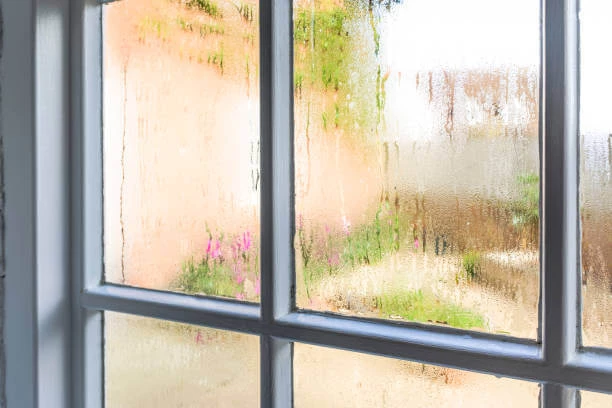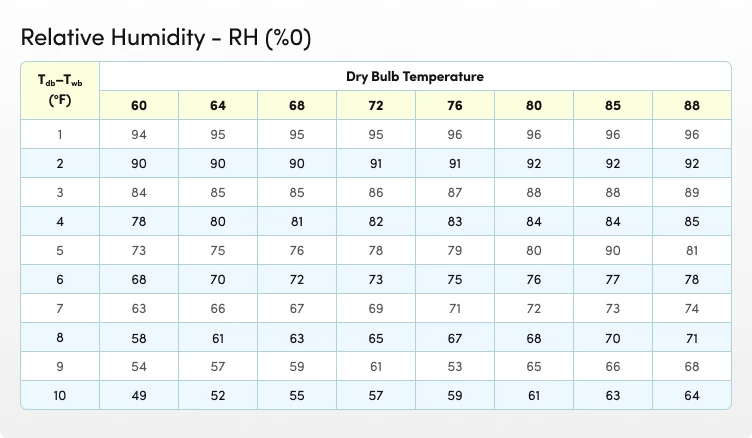Indoor humidity often gets overlooked when considering the climate inside your home. But humidity levels that measure outside of the ideal levels can create major issues. It’s important to understand how to measure humidity levels in your home so you know when to call a heating and cooling repair service. Keep reading for tips on how to keep your indoor humidity levels at an appropriate level for every season.
How to Measure the Relative Indoor Humidity Level
Using a hygrometer is the easiest way to measure the humidity in your home. The device measures humidity and temperature and is easy to use as a simple thermometer. If you don’t have a hygrometer and are concerned about your home’s humidity, try one of the alternative methods listed below.

The Ice Cube Method
This simple method will give you a basic idea of your indoor humidity levels. All you will need is a glass of water and a few ice cubes. Start by putting two to three ice cubes in the glass of water, then wait.
After four minutes, go back and check the glass. If condensation is forming or dripping on the outside of the glass, your humidity levels may be too high. On the other hand, if there is no condensation forming at all, then your humidity levels may be too low.
Don’t perform the test in the kitchen, where cooking vapors can throw off the results. It’s also a good idea to leave the room after placing the ice cubes into your glass because air currents from your movement can affect results, too.
The Difference Between Wet and Dry Bulb Thermometer Temperatures
This method requires a few more materials than the ice cube method, but it provides a more accurate measure of your indoor humidity levels. To test the difference between the wet and dry bulb thermometers you will first need two regular glass thermometers.
To perform the humidity test, leave one thermometer as is to play the part of the dry bulb. Then wrap a wet cotton ball around the bottom (the bulb) of the second thermometer and fasten it with a rubber band. This will serve as the wet bulb. Be sure to use room-temperature water to moisten the cotton ball to prevent the water temperature from distorting results.
After preparing the wet bulb, place both thermometers side-by-side on a piece of cardboard. Once you’ve done so, leave the room for five minutes, then go back to check the temperatures on both thermometers and record the results.
When you have your readings, subtract the wet-bulb temperature from the dry bulb to find the depression value. Finally, take the results you found and compare them to the relative humidity by using this chart:

If you realize that your humidity levels may be too high or too low in your home, don’t hesitate to call Deljo Heating & Cooling to schedule an appointment with our heating and cooling repair service near Chicago, IL.
What is a Comfortable Indoor Humidity Level?
Appropriate humidity levels vary by season, especially with the drastic weather changes in Chicago summers and winters. However, the following guidelines provide rough targets for what you should shoot for during the hottest and coldest months.
- Summer
Maintaining 40-50% relative humidity in your home should keep you comfortable during the summer. If your humidity goes above 60%, it will cause your house to become moist and muggy. - Winter
During the colder months, 30-40% humidity should feel comfortable. Higher levels of humidity during the winter can lead to condensation forming on your windows.
Your indoor humidity should be around the 45-55% range throughout the warmer months and slightly lower in winter. If you check the humidity in each room of your home and notice it is out of range, or it’s beginning to feel dry or muggy, consider calling a heating and cooling repair service near Chicago, IL.
Managing Indoor Humidity
However you measure it, monitoring and maintaining appropriate humidity levels in your home ensures your comfort while protecting your home from excess moisture. Here are a few ways to keep your humidity at an appropriate percentage.
How to Decrease Your Indoor Humidity Levels:
- Turn on your exhaust fans to keep excess moisture at bay.
- Invest in a dehumidifier.
- Add houseplants to your decor to naturally absorb excess moisture from the air.
- Avoid boiling water on the stove. Boiling water adds more moisture to the already humid air, which could make the humidity worse.
- Shorten your showers or take showers with cooler water.
- Avoid using your dryer to dry clothes as doing so adds moisture into the air. To avoid fueling the humidity try hanging your clothes to air dry outdoors.
- Keep your air conditioning filters clean.
How to Increase Your Indoor Humidity Levels:
- Use a large room or whole-home humidifier to release moisture into the air.
- Dry your clothes by hanging them on an indoor clothing rack. As they dry, the moisture will be released into the air, increasing the humidity.
- Invest in houseplants. Plants transpire, which releases new moisture into the dry air. Thus, plants help to increase and decrease humidity, depending on the environment.
- Shower with the bathroom door open to release steam into the air.
- Place open containers of water near the vents.
- Cook with your stove, especially dishes that require boiling water.
- Use a spray bottle of water to increase moisture in the air.
The Importance of Controlling Indoor Humidity Levels
Controlling the amount of water vapor in your home is more important than most might think. Low humidity contributes to a variety of undesirable conditions, from dry skin to an increased susceptibility to infections and illnesses. Low humidity levels can also damage wood floors and furniture.
In contrast, high humidity levels can cause mold to grow rapidly and even warp wooden features in the home. High humidity can also cause discomfort and create muggy and sticky indoor conditions.
Discover Quality Heating and Air Conditioning Services With Deljo
If you feel that you might need an adjustment in your humidity levels or need some advice on how to make your indoor climate more comfortable, call Deljo Heating and Cooling for HVAC services that will address your humidity issues.
To get in touch with our heating and cooling repair experts near Chicago, IL, contact our customer service team at (773) 888-4229.

